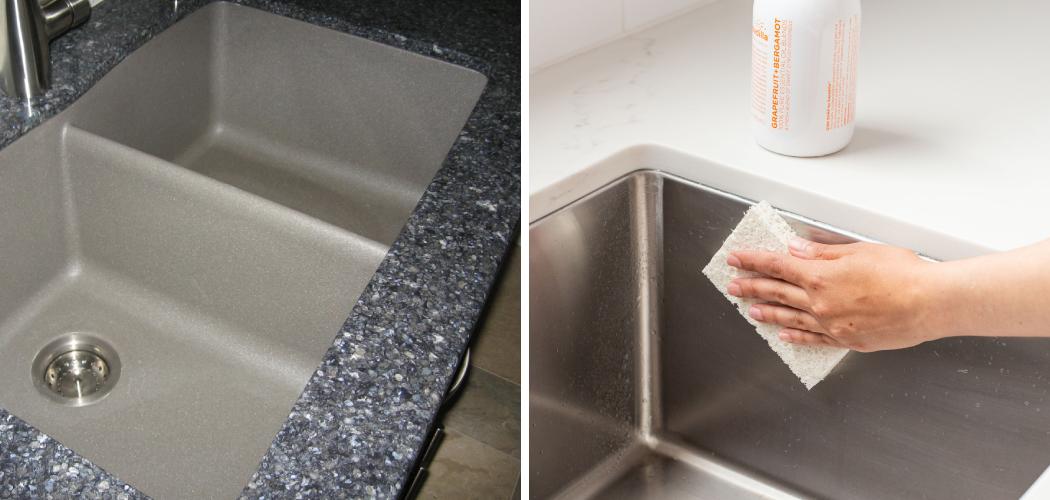Blanco silgranit sinks are some of the most durable, easy-to-maintain, and vibrant-looking kitchen sinks on the market. They’re made from a special material called Silgranit, an 80% natural granite composite that is highly resistant to scratches, staining, and heat – meaning it’s ideal for everyday use in busy family kitchens.
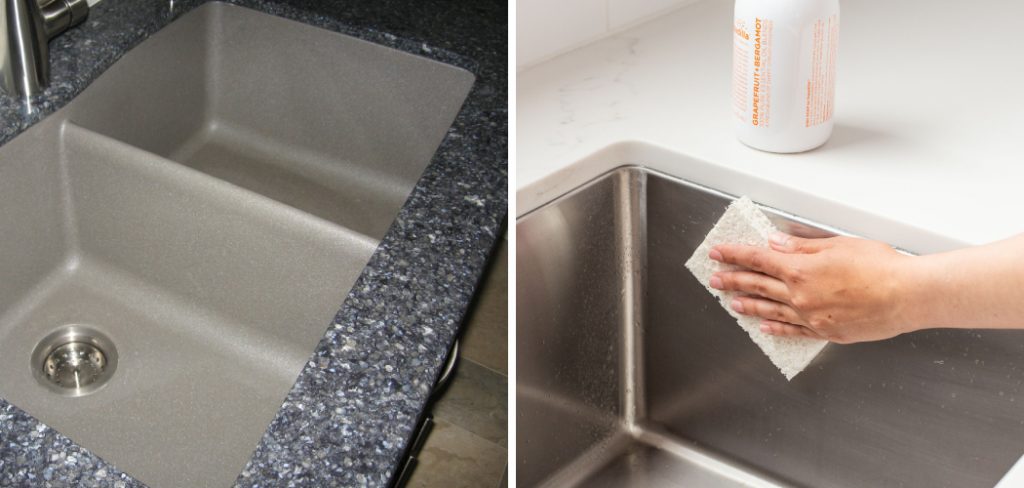
Cleaning your Blanco Silgranit sink regularly can help to keep it looking its best and in top condition. One of the main advantages of using Blanco Silgranit sinks is that they are extremely easy to clean and maintain. The surface is non-porous, so it does not absorb liquids or food particles, making it very resistant to bacteria growth.
Additionally, silgranit sinks are scratch and heat-resistant, so you won’t have to worry as much about scratching or discoloring the sink when cleaning. Even stubborn stains can be removed with regular cleaning, making it simple to keep your silgranit sinks looking new. In this blog post, You will learn in detail how to clean blanco silgranit sinks.
Step-by-Step Processes for How to Clean Blanco Silgranit Sinks
Step 1: Inspect Your Sinks
Before you start cleaning, inspect your sinks to identify any major problem areas. Look for dirt and debris buildup, mineral deposits, or discoloration that could be caused by hard water. Gather all necessary supplies like a soft cloth, gentle, non-abrasive cleaner (specifically designed for Silgranit surfaces), and a non-scratch scrubber. Make sure to wear rubber gloves if necessary.
Step 2: Cleaning Routine
Use a soft cloth to gently wipe away any dirt or debris that has accumulated in the sink. If you have hard water, there may also be mineral deposits on your sinks. To remove them, use a non-abrasive cleaner specifically designed for Silgranit surfaces mixed with warm water. Apply the solution to the affected area and allow it to sit for a few minutes.
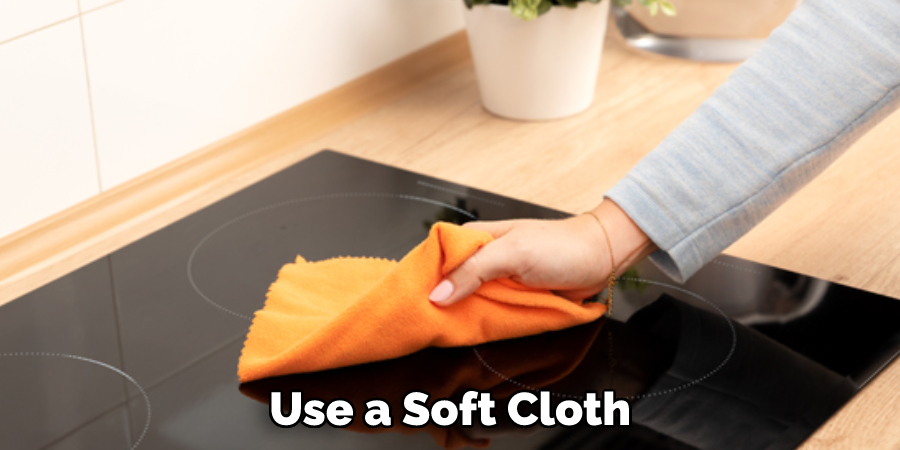
Using a non-scratch scrubber, gently scrub away at the deposits until they are removed. Once finished, rinse off with warm water and dry with a soft cloth. Repeat this process as needed for tougher stains, or use an appropriate stain remover.
Step 3: Maintaining Your Sink
To keep your Blanco Silgranit sinks looking their best, it is important to maintain them regularly. Wipe away dirt and debris with a soft cloth after each use. For extra sparkle, use a glass cleaner or gentle, non-abrasive cleaner after each use. Once every few weeks, use a non-abrasive cleaner designed for Silgranit surfaces to thoroughly clean the sink. Following these simple steps will ensure your Blanco Silgranit sinks remain clean and beautiful for years to come.
Tips for How to Clean Blanco Silgranit Sinks
- Always wear gloves when cleaning a Blanco Silgranit sink to protect your skin from the harsh chemicals and abrasives used in some cleaning products.
- Avoid using bleach or any other highly acidic cleaners on a Blanco Silgranit sink, as these can corrode the sink’s surface over time.
- Never use steel wool or any other abrasive scrubbers on the surface of a Blanco Silgranit sink, as this can scratch and damage the finish.
- After each use, rinse the sink with hot water to remove food particles that may have been left behind.
- Use a non-abrasive detergent and a soft cloth to clean the sink regularly gently.
- To remove stubborn stains, you may use a paste of baking soda and water applied directly on the stain and then wipe it off with a damp cloth.
- Wipe down the sink with a microfiber cloth to remove moisture and prevent mineral deposits from forming after each use.
- Periodically seal the sink with a granite sealer to protect the surface and keep it looking new for years to come.
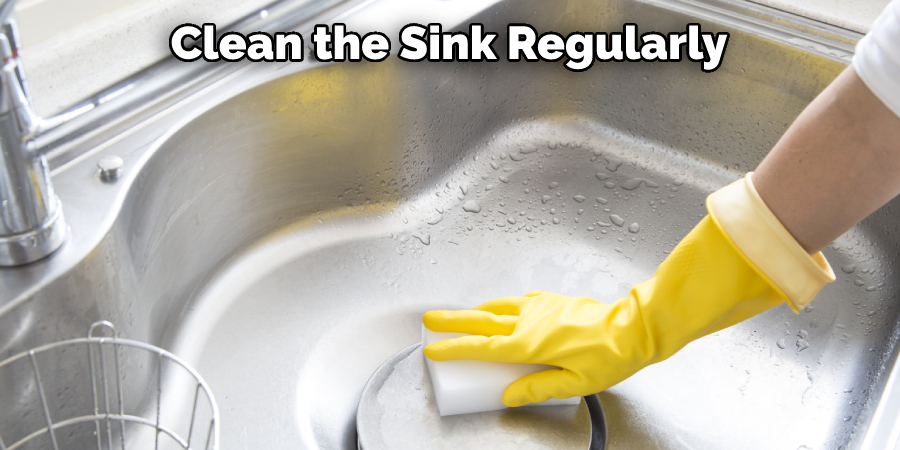
Following these safety tips will help you maintain your Blanco Silgranit sink properly, ensuring that it looks its best and lasts for many years.
How Often Should the Sink Be Cleaned?
It is important to clean your Blanco Silgranit sink regularly to keep it looking like new. How often you should clean your sink really depends on how much you use it and the type of activities that take place there. For example, if you cook frequently, then daily cleaning may be necessary. If the sink only sees occasional usage, then weekly cleaning should suffice.
To clean your Blanco Silgranit sink daily, you must use a gentle soap and a soft cloth or sponge. Avoid using harsh chemicals or abrasive scrubbing pads – these could damage the delicate finish of your sink. After washing with soap and water, dry the sink thoroughly with a soft cloth or paper towel.
For weekly cleaning, a mild detergent and warm water should be sufficient to remove any dirt or grime that has accumulated in the sink. Again, avoid using harsh chemicals or abrasive materials, as they could damage your sink’s finish. After washing with soap and water, rinse the sink thoroughly with clean water and dry with a soft cloth.
How Can You Protect Your Sink From Scratches?
The most important way to protect your Blanco Silgranit sink from scratches is to use a cutting board when preparing food. Cutting boards provide a safe surface for knives and other sharp utensils that can scratch the sink surface if used directly on it. Additionally, you can place a rubber mat or dishcloth in the sink as additional protection.
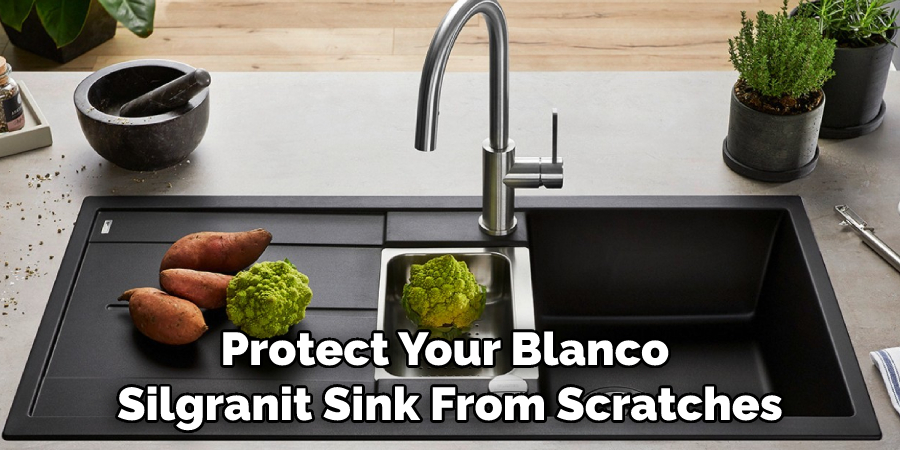
When washing dishes, use a soft cloth and mild dish soap to ensure the sink remains unscathed. For tougher stains or build-up from hard water deposits, try using a non-abrasive cleaner such as baking soda. Be sure to rinse thoroughly after cleaning to prevent any residue from being left behind. Lastly, never use abrasive cleaning materials or scouring pads, as these will cause scratches on the sink surface. These simple steps will help ensure your Blanco Silgranit sink remains in pristine condition for many years.
How Can You Prevent Lime Scale and Water Spots on Your Blanco Silgranit Sink?
The best way to prevent lime scale and water spots on your Blanco Silgranit sink is to wipe it dry between uses. After every use, take a soft cloth (lint-free) and gently dry the sink surface. This will help keep away the pesky lime scale and water spots that can make your sink look dull.
You can also help prevent limescale and water spots from forming by using a soft cloth to wipe away any trace of minerals or other particles that may be in the sink after washing. To do this, fill the sink with warm soapy water and add a few drops of white vinegar. Use your soft cloth to gently scrub the sink’s surface and rinse with warm water.
Finally, try to avoid using harsh chemicals or scouring pads on the surface of your Blanco Silgranit sink, as this can damage the finish. If you find it necessary to use chemical cleaners, make sure they are specifically designed for granite composite materials.
Is It Necessary to Call Any Professional to Clean Blanco Silgranit Sink?
No, calling a professional to clean Blanco Silgranit Sinks is unnecessary. It can be done easily with the proper instructions and cleaning products. Blanco Silgranit sinks are extremely durable and easy to maintain surfaces, so there is no need for complicated or expensive cleaning methods. You will need basic cleaning supplies and tools to clean your sink correctly.

A soft cloth can be used for this purpose, but if there are any tough stains or stuck-on particles, a nylon scrub brush can help to loosen them. Once the surface has been scrubbed, use a soft sponge and warm water to wipe off any remaining dirt or grease. For more stubborn deposits, you may need to use a specialty cleaner designed for cleaning Silgranit sinks.
After removing all visible dirt and debris, Cleaning Blanco Silgranit Sinks involves using an all-purpose cleaner to sanitize the surface. Follow the instructions on the cleaner to ensure that it is safe for use on Silgranit sinks, and make sure to rinse off any excess product with clean water. To prevent streaks or marks, dry your sink immediately after cleaning it with a soft cloth.
Conclusion
One of the main disadvantages of cleaning Blanco Silgranit sinks is that they can be easily scratched or damaged if not cleaned properly. This can be caused by harsh chemicals, abrasive scrubbing pads, steel wool, or other products containing sharp particles. It is also important to avoid using highly acidic cleaners as these could damage the sink’s surface.
Using a soft cloth and warm soap solution is best when cleaning Blanco Silgranit sinks. Additionally, care should be taken not to let water sit in the sink for extended periods of time, as this can cause discoloration or staining on the material. I hope reading this post has helped you learn how to clean blanco silgranit sinks. Make sure the safety precautions are carried out in the order listed.
You Can Check It Out to Fix Rusty Water Pipes

